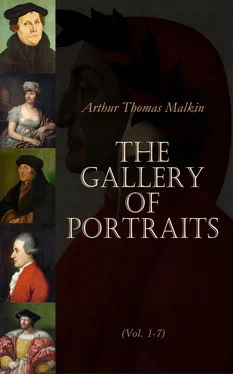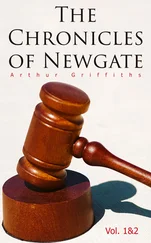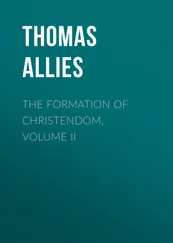
Table of Contents
It was not till the time of Banks and Flaxman, that the English school had produced any notable specimens of the lofty and heroic style in sculpture. Wilton, Bacon, and Nollekens, were respectable in their line, which was nearly confined to allegorical monuments and busts. Roubilliac, though eminently unclassical, possessed a superior style of art, and has executed some works which for strength and liveliness of expression may challenge competition in this or any other country. But the attainments and genius of the two first-mentioned artists were of a different, and a loftier class. Those, however, who trace the history of the lives of Flaxman and Banks, will find, that whatever they achieved in the higher departments of sculpture was due solely to their ardent pursuit of excellence, almost unaided by that patronage, which, in this country, has been so liberally bestowed on other branches of the fine arts.
The heroic beauty and noble proportions of the Mourning Achilles, fully establish the claim of Banks to a high rank as a poetic sculptor; this fine work of art, however, remained for years in plaster during his life, and after his death was presented to the British Gallery, where it now stands in the hall, “as a warning,” observes Mr. Allan Cunningham, “to all sculptors who enter, that works of classic fancy find slender encouragement here!” With respect to Flaxman, in an early period of his professional career, he executed the outline illustrations of Homer, Æschylus, and Dante, which at once established his fame; and yet, during a long life, no single patron called upon him to embody in marble any one of these lofty conceptions, the very existence of which forms the chief glory of the English school of poetic design.
The progress of sculpture in this country has been very recently traced by Mr. Allan Cunningham, in his amusing ‘Memoirs of British Sculptors.’ Of these, the last, and most interesting, is that of Flaxman, from the spirited and amusing pages of which, together with the memoir prefixed to the Lectures on Sculpture, this short account has been chiefly extracted.
John Flaxman, the second son of a moulder of figures, who kept a shop in the Strand for the sale of plaster casts, was born in 1755. Like most who have been eminent as artists, he early manifested a taste for drawing. As soon as he could hold a pencil, he took delight in copying whatever he saw, and at an age when most children are engrossed with childish sports, he had read many books, and had begun to trace upon paper the lineaments and actions of those heroes who had engaged his fancy. Numerous stories are told of his fondness for that art to which his mature energies were devoted; and, allowing somewhat for the fond recollections of parents and friends, it is fully established that young Flaxman early showed proofs both of application and genius. To this development of his talents, his bodily constitution may have lent some aid, for his health from infancy was delicate, and a weak, and somewhat deformed frame, indisposed him from joining in the usual games of children.
His station in life did not enable him to profit by the common means of education; he gathered his knowledge from various sources, and mastered what he wanted by some of those ready methods which form part of the inspirations of genius. The introduction, through the means of an early patron, Mr. Mathew, to Mrs. Barbauld, contributed to improve his education and form his taste.
In his fifteenth year he became a student in the Royal Academy. Here he formed an intimacy with Blake and Stothard, both artists of original talent; but, like their more eminent companion, less favoured by fortune than many not so deserving of patronage and applause.
At the Academy, Flaxman obtained the silver medal, but in the contest for the gold one, he was worsted by Engleheart, a name now entirely forgotten. Flaxman, however, though humbled and mortified, was only stimulated by this defeat to greater exertions and more unwearied application.
The narrow circumstances of his father did not allow him to devote his whole time to unproductive study. His first employment was for the Wedgewoods; and to this fortunate combination of genius in the artist, and enterprise, skill, and taste in the manufacturers, the sudden and rapid improvement of the porcelain of this country is mainly to be ascribed. “The subjects executed by Flaxman were chiefly small groups in very low relief, from subjects of ancient verse and history; many of which,” observes Mr. A. Cunningham, “are equal in beauty and simplicity to his designs for marble: the Etruscan vases and the architectural ornaments of Greece supplied him with the finest shapes; these he embellished with his own inventions, and a taste for forms of elegance began to be diffused over the land. Flaxman loved to allude, even when his name was established, to these humble labours; and since his death, the original models have been eagerly sought after.” A set of chessmen, also executed for the Wedgewoods, are exceedingly beautiful.
Whilst earning by his labour a decent subsistence, he continued his devotion to the pursuit of his art, making designs from the Greek poets, the Pilgrim’s Progress, and the Bible. He exhibited various works at the Academy; but it does not appear that he was enabled by patronage to execute any of these in marble, and it is, perhaps, owing to the little practice that he had in early life in this mode of working, that his admitted want of excellence in this branch of the art of sculpture is to be attributed.
In 1782 he left his father’s home, and married an amiable and accomplished woman, whose society and affection formed the chief happiness of his after life. All those who knew them, describe in glowing terms the harmony and mutual affection in which they lived. In 1787 he determined to visit Rome. Two monuments which he executed before his departure deserve notice. One is in memory of Collins. It represents the poet seated, reading what he told Dr. Johnson was his only book, ‘THE BIBLE,’ whilst his lyre and poetical compositions lie neglected on the ground. The second is erected in Gloucester cathedral, to Mrs. Morley, who perished with her child at sea, and is represented as rising with the infant from the waves, at the summons of angels. The simple and serene beauty of this work is admirably suited for monumental sculpture.
How he profited whilst at Rome by the study of those noble specimens of ancient art, to which modern artists resort as the best school of excellence, is shown in the outline illustrations of Homer, Æschylus, and Dante; works which spread his fame throughout Europe, and at once stamped the character of the English School of Design. These compositions, which have been the admiration of every nation where art is cultivated, which have been repeatedly published in Germany and Italy, as well as in England, and which have been commented on with unlimited praise by Schlegel, and almost every other modern writer on the fine arts, were made, the Homeric series for fifteen shillings; those taken from Æschylus and Dante, for one guinea each. It is not creditable to English taste that this country does not possess a single group, or even bas-relief, executed from them, although the author lived for more than thirty years after their publication.
Of the illustrations of the Iliad, there are in all thirty-nine; of the Odyssey, thirty-four. Of the designs from Dante, thirty-eight are taken from the Hell, thirty-eight from the Purgatory, and thirty-three from the Paradise. The Homeric series was made for Mrs. Hare. The illustrations of Æschylus were undertaken at the desire of the Countess Spencer; and those of the Divina Commedia were executed for Mr. Thomas Hope, one of Flaxman’s early patrons, for whom, whilst at Rome, he executed in marble a very beautiful small-sized group of Cephalus and Aurora.
Читать дальше













